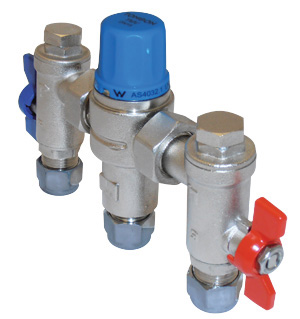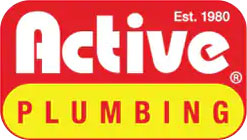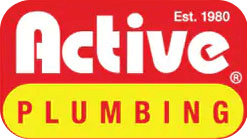Installation Testing and Certification of Thermostatic Mixing Valves.
Thermostatic mixer valves are used in a wide variety of applications.
Restaurants, Nursing Homes, Preschools, and Commercial applications.

So why do we need to install these valves?
The Dangers of Hot Water.
Every year, thousands of people suffer serious thermal shock or scalding injuries in their bathtubs, basins and showers. Additional untold numbers become ill due to water-borne bacteria, such as Legionella.
Often, injuries in the shower are caused by slips and falls in reaction to a sudden increase or decrease in water temperature. Ideally, if the supply of cold or hot water is lost, the water flow should be shut down immediately. Termination of flow would eliminate the instinctive but dangerous reaction to move quickly away from a too hot or too cold water stream.
Thermostatic Mixing Valves maintain and limit mixed hot water to a desired, selectable temperature, helping to minimize SCALDING.
More than 90% of scalding incidents occur in the home. The tender skin of very young children and the slow reaction time of the elderly and the handicapped make them most vulnerable to serious hot water burns. Scalding injuries are tremendously painful, and the effects can last for years. Scalding occurs for a variety of reasons. In some cases, water heater thermostats can be faulty, or set too high. In others instances, temperature regulating valves at the domestic hot water source are either malfunctioning or missing altogether. Water heaters are normally set to temperatures above 55°C to prevent development of harmful bacteria, such as Legionella, in the water supply. Water at temperatures above 41°C is painful. At a temperature of 55°C a child can be scalded in less than 4 seconds.
Thermostatic Mixing Valves maintain and limit the mixed hot water to a desirable selectable temperature, helping to prevent scalding injury.
Legionella Bacteria
Legionella is the bacteria responsible for Legionnaire’s Disease, an acute bacterial infection of the lower respiratory tract. This bacterium was first identified in 1977 by the Centers for Disease Control as the cause of an outbreak of pneumonia that caused 34 deaths at a 1976 American Legion Convention in Philadelphia.
Pontiac Fever is a less severe, non-pneumonia, flu-like disease that is associated with and likely caused by Legionella bacteria. Legionella is a fairly common water bacteria and has been found to exist widely in many surface water sources such as; lakes, rivers, streams and ponds. It can also be found in ground water sources and some soils.
At the levels found in these naturally occurring sources it typically does not pose a threat to public health.
When the bacterium enters a domestic water system it can find an ideal host environment of warm water temperatures 40-46°C, stagnant water areas (storage tanks and dead-end piping legs) and ample food sources (sediment, scale, deposits and biofilm).
Under these conditions Legionella can rapidly colonize, forming higher concentrations that can pose the public health threat of Legionnaire’s Disease.
There are many methods of controlling colonization of Legionella bacteria. However, a widely accepted and preferred method is to maintain the hot water system storage temperature continually at or above 60°C. Unfortunately, the elevated temperature necessary to minimize the growth of and kill Legionella bacteria has the potential to cause serious scalding injuries.
Thermostatic Mixing Valves maintain and limit the mixed hot water to a desirable, selectable temperature allowing for the storage of domestic hot water at the higher temperatures necessary to reduce the risk of Legionella growth in the system.
Key Questions on Thermostatic Mixing Valves Used in Health Care Facilities.
1. How often are TMV’s required to be serviced?
TMV’s are to be watermarked against AS4032.1. This Australian Standard then refers to AS4032.3 Requirements for field testing, maintenance or replacement of TMV’s. This standard states that:
TMV’s are to be field tested at intervals of not more than 12 months.
A record of test results and repairs shall be provided in accordance with AS4032.3 Appendix B.
A management system shall be established to ensure the devices are tested and maintained in accordance with relevant regulatory requirements, AS4032.3 and the manufacturer’s instructions.
Thermostatic actuators shall be replaced at intervals not exceeding 5 years.
The replacement and lubrication of dynamic ‘o’ rings and seals at intervals not exceeding 5 years or at shorter intervals as required by the manufacturer.
TMV’s are required to be commissioned by a technically competent and qualified person.
2. Is there a maximum height that TMV’s may be installed from floor level?
TMV’s shall be mounted at a maximum height of 1.6 metres from the floor slab for maintenance purposes.
3. What is the maximum pipe work dead leg allowed for in warm water supply?
Dead legs shall not exceed 10 lineal metres.
4. Is Legionella sampling required for all warm water systems?
Yes.
All new and existing facilities are required to ensure microbial readings at fixture outlets do not exceed 10 legionellae colony-forming units per millilitre. Disinfection shall be done in accordance with the Health Authority Microbial Control. The onus for the correct operation and maintenance / service rests with the CEO, GM or person in charge of the premises.

Active Plumbing can offer the services of installation and periodical testing and certification of Thermostatic Mixing Valves Just call us on 1300651965

